Welcome to my kitchen! Today I'm sharing one of the most exciting dishes from my Filipino heritage - Jumping Salad. This incredible appetizer showcases live freshwater shrimp that literally "jump" when dressed with tangy calamansi juice.
The first time I made this for friends, their eyes widened with amazement as the tiny shrimp danced in the bowl. Don't worry though - this impressive dish is actually one of the simplest recipes you'll ever make, requiring just four fresh ingredients and absolutely no cooking.
The delicate sweetness of the freshwater shrimp pairs perfectly with bright citrus, juicy tomatoes, and crunchy onions for a refreshing taste experience you won't find anywhere else.
What is Jumping Salad?
Jumping Salad is a traditional Filipino appetizer featuring live freshwater shrimp that appear to "jump" when citrus juice is poured over them. The acidity from the calamansi causes the shrimp to react, creating a theatrical dining experience.
This dish is particularly popular in the Ilocos region and areas surrounding large freshwater lakes like Laguna de Bay and Taal Lake, where these small crustaceans are abundant.
Jump to:
Why You'll Love This Recipe
This authentic Filipino delicacy showcases the freshest possible seafood experience! Jumping Salad is a conversation starter at any gathering, offering a unique culinary adventure that connects you with traditional Filipino cuisine.
The bright citrus flavors perfectly complement the delicate sweetness of freshwater shrimp, creating a refreshing appetizer that's both simple to prepare and impressive to serve.
Ingredients
I've carefully selected each ingredient in this Jumping Salad to create a perfect balance of flavors and textures. The live freshwater shrimp are the stars of the show - their natural sweetness and tender texture can't be matched by frozen alternatives.
Calamansi juice provides the perfect bright acidity that not only makes the shrimp "jump" but also enhances their delicate flavor without overpowering them. The diced tomatoes add juicy freshness and a touch of sweetness, while the chopped onions bring a satisfying crunch and gentle bite that rounds out the dish.
Together, these simple ingredients create a harmonious blend that highlights the natural flavors of fresh Filipino seafood in the most authentic way possible.
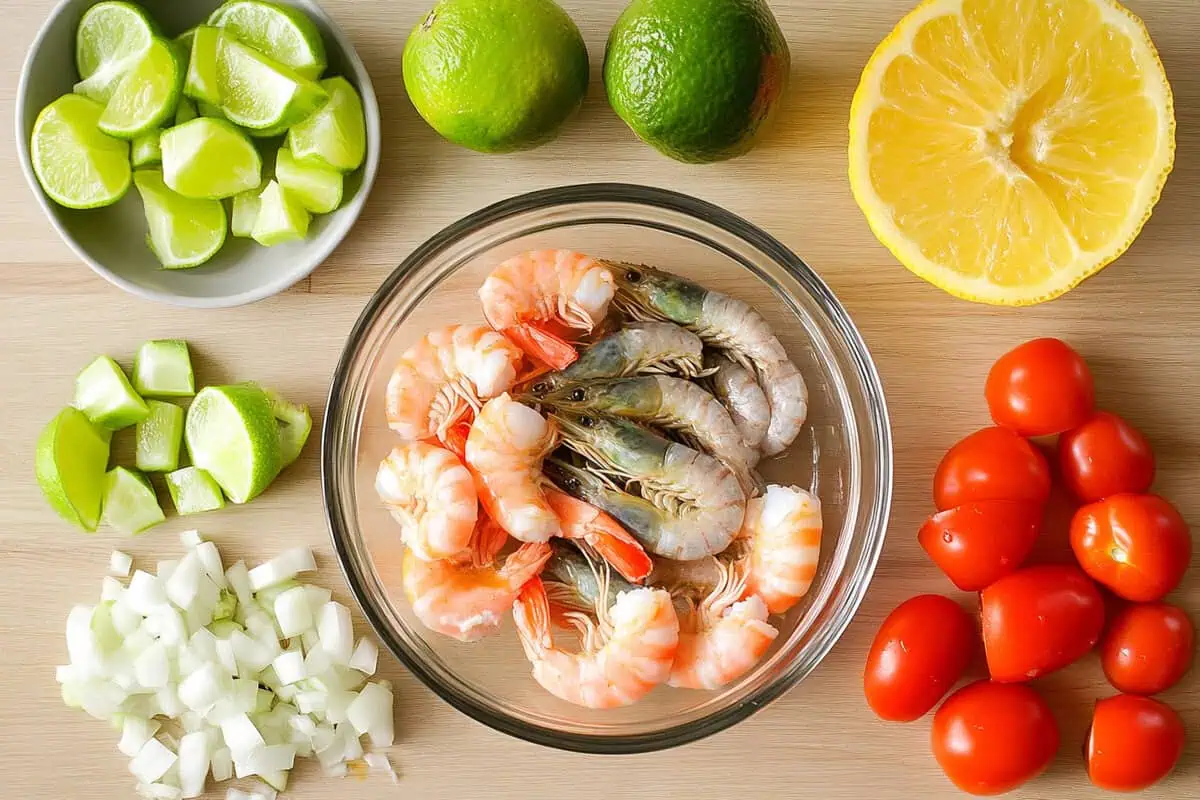
- 1 cup live freshwater shrimp (locally known as apta, yapyap, daliw-daliw, or koros)
- 3-4 calamansi fruits, juiced (or substitute with lime juice)
- 1 medium tomato, diced
- 1 small onion, finely chopped
- Salt to taste (optional)
Equipment
- Small serving bowl
- Citrus juicer or reamer
- Sharp knife
- Cutting board
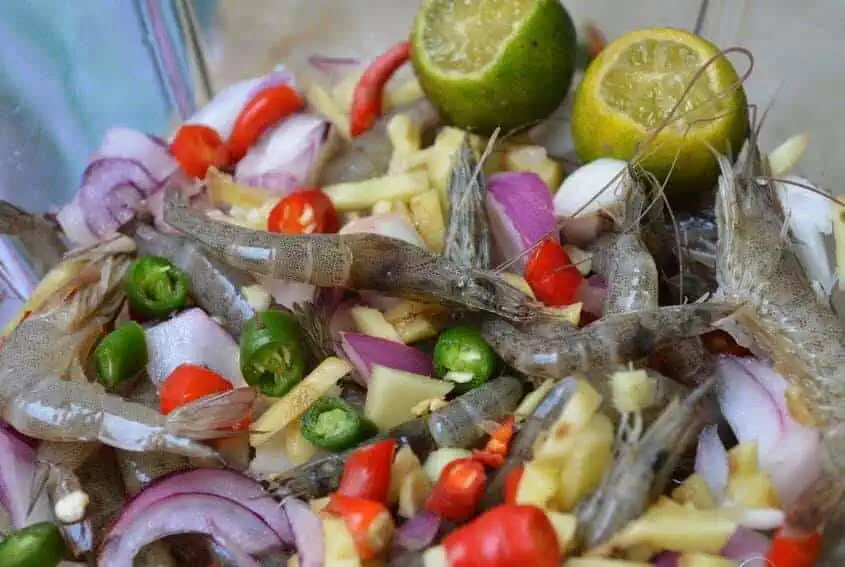
How To Make
- Rinse the live freshwater shrimp in cold water, keeping them alive.
- Place the shrimp in a serving bowl.
- Combine the calamansi juice, diced tomatoes, and chopped onions in a small bowl.
- Just before serving, pour the calamansi mixture over the live shrimp.
- The citrus juice will cause the shrimp to "jump" or move, giving this dish its distinctive name.
- Serve immediately while the shrimp are still moving.

Tips from Lola's Kitchen
- Freshness is crucial - This dish relies entirely on extremely fresh, live shrimp.
- Serve in a deep bowl with slightly high sides to prevent the jumping shrimp from escaping.
- Add a pinch of chili flakes for a spicy variation that complements the citrus flavors.
- Use a transparent bowl if possible, to showcase the unique "jumping" aspect of this dish.
- Always prepare just before serving - this dish cannot be made in advance.
Substitutions
- Can't find calamansi? Use lime juice or a mixture of lime and orange juice.
- No access to live freshwater shrimp? While not traditional, you can make a similar dish using very fresh (not live) marine shrimp, though you'll miss the "jumping" effect.
- For a more complex flavor, add a small amount of fish sauce (patis).
- Red onions can replace white onions for a milder, slightly sweeter flavor.
Troubleshooting
- Shrimp not jumping? They may not be fresh enough or the calamansi juice might be too diluted.
- Too sour? Balance with a tiny pinch of sugar or use less calamansi juice.
- Texture too soft? The citrus begins to "cook" the shrimp quickly - serve immediately after adding the juice.
Storage & Reheating
- This dish is meant to be consumed immediately and cannot be stored.
- Do not attempt to refrigerate or reheat Jumping Salad, as it will completely alter the texture and freshness.
- Any leftover prepared shrimp should be fully cooked before consuming if they have been sitting in citrus juice.
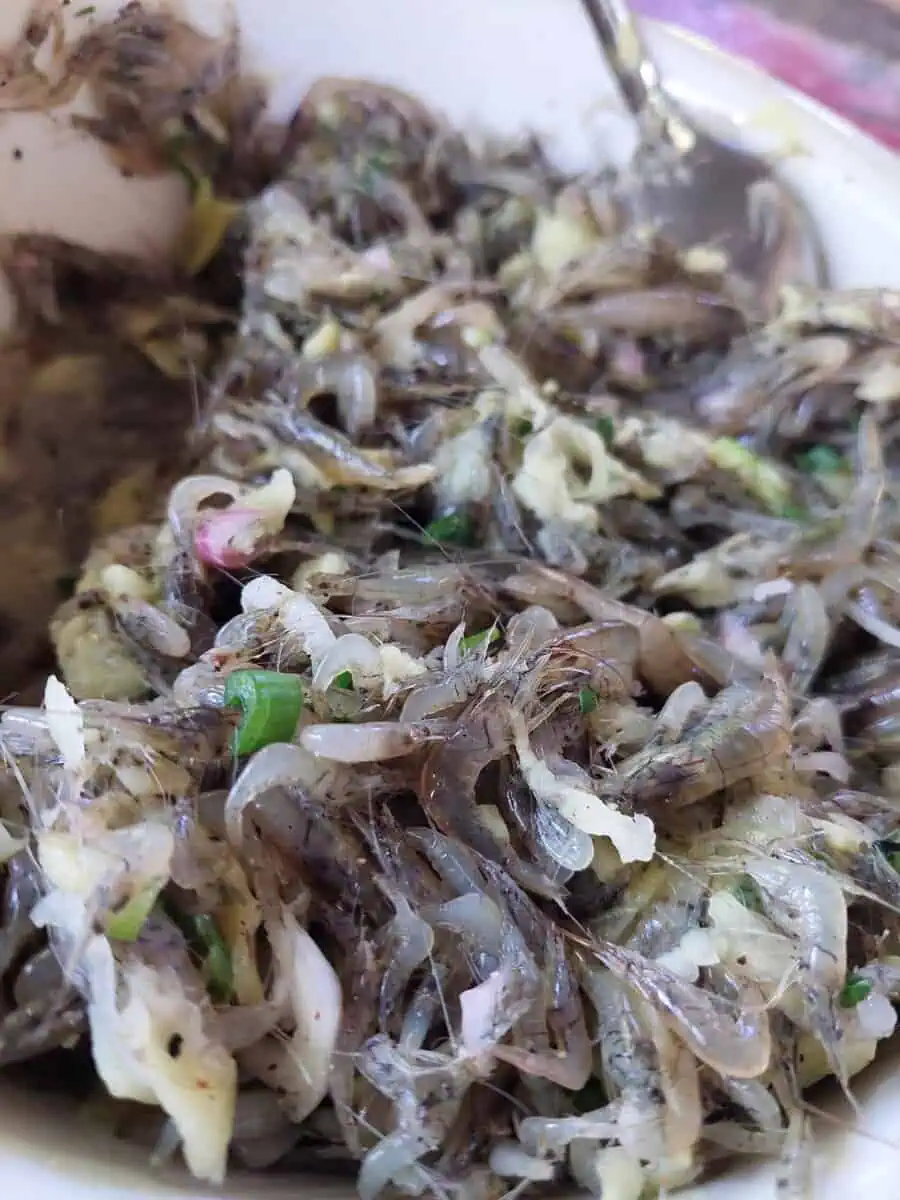
FAQ
Is it safe to eat live shrimp?
The calamansi juice begins a chemical process similar to cooking, known as denaturation. For those concerned, you can wait a few minutes for the citrus to partially "cook" the shrimp before eating.
Where can I find freshwater shrimp in the US or other countries?
Look for Asian markets that specialize in Filipino ingredients, or check with local fishmongers who may be able to source freshwater shrimp.
What does Jumping Salad taste like?
It has a delicate, sweet flavor with bright citrus notes and the crunch of fresh vegetables.
Can I prepare this dish for someone who's never had it before?
Consider informing guests about the live nature of this traditional dish before serving, as it can be surprising for those unfamiliar with it.
Is this dish sustainable?
Freshwater shrimp are abundant in their native habitats and reproduce quickly, making them a relatively sustainable seafood choice when harvested responsibly.
Related
Looking for other recipes like this? Try these:
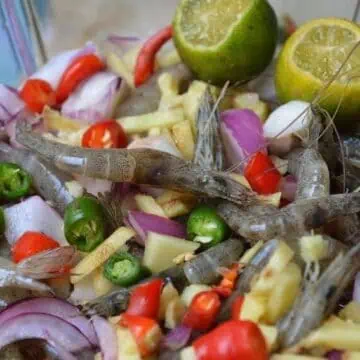
Jumping Salad Recipe (Fresh Shrimp Ceviche)
Ingredients
- 1 cup live freshwater shrimp locally known as apta, yapyap, daliw-daliw, or koros
- 3-4 calamansi fruits juiced (or substitute with lime juice)
- 1 medium tomato diced
- 1 small onion finely chopped
- Salt to taste optional
Instructions
- Rinse the live freshwater shrimp in cold water, keeping them alive.
- Place the shrimp in a serving bowl.
- Combine the calamansi juice, diced tomatoes, and chopped onions in a small bowl.
- Just before serving, pour the calamansi mixture over the live shrimp.
- The citrus juice will cause the shrimp to "jump" or move, giving this dish its distinctive name.
- Serve immediately while the shrimp are still moving.
Tips from Lola's Kitchen
- Freshness is crucial - This dish relies entirely on extremely fresh, live shrimp.
- Serve in a deep bowl with slightly high sides to prevent the jumping shrimp from escaping.
- Add a pinch of chili flakes for a spicy variation that complements the citrus flavors.
- Use a transparent bowl if possible, to showcase the unique "jumping" aspect of this dish.
- Always prepare just before serving - this dish cannot be made in advance.
The Story Behind Jumping Salad
Growing up in a Filipino household, I was always fascinated by the unique dishes that connected us to our heritage. None captured my imagination quite like Jumping Salad, a traditional Filipino appetizer that showcases the incredible freshness of local ingredients while telling a story about our relationship with nature and food.
Jumping Salad (or "Kinilawang Hipon" in some regions) traces its origins to the fishing communities surrounding the Philippines' vast freshwater lakes, particularly Laguna de Bay and Taal Lake. In these regions, where freshwater prawns are abundant, local fishermen would catch these tiny crustaceans using traditional tools called "salap" and "sakdg" (scissors-nets) – techniques passed down through generations.
The dish emerged as a practical way to showcase the ultimate freshness of the catch. In Filipino cuisine, freshness isn't just preferred – it's celebrated. What better way to prove your shrimp couldn't be fresher than serving them still moving on the plate? This tradition likely dates back centuries, though it remains relatively undocumented in formal culinary history.
What makes this dish particularly special is its regional variations. In Ilocano communities in Northern Luzon, where it's sometimes called "koros," the dish might include a splash of local coconut vinegar. Around Laguna de Bay, where the shrimp are known as "yapyap," families might add a touch of wild chili for heat. Each family and region puts their own subtle twist on this simple preparation.
The name "Jumping Salad" perfectly describes the theatrical experience of eating this dish. When the acidic calamansi juice hits the live shrimp, they respond with movement – literally jumping in the bowl – creating an interactive dining experience unlike any other. This reaction is both a visual spectacle and an assurance of the incredible freshness of the ingredients.
Today, as farm-to-table and hyper-fresh ingredients become increasingly valued in global cuisine, Jumping Salad represents a tradition that has honored these principles for centuries. While the dish might seem unusual to those unfamiliar with Filipino food traditions, it embodies the deep respect for ingredients and minimal intervention that characterizes so much of the Philippines' traditional cuisine.
When I prepare Jumping Salad in my own kitchen, I'm not just making a dish – I'm continuing a cultural tradition that connects me to generations of Filipino families who have gathered around tables to enjoy this unique delicacy. It's a simple preparation that speaks volumes about our culinary heritage and our appreciation for nature's bounty.
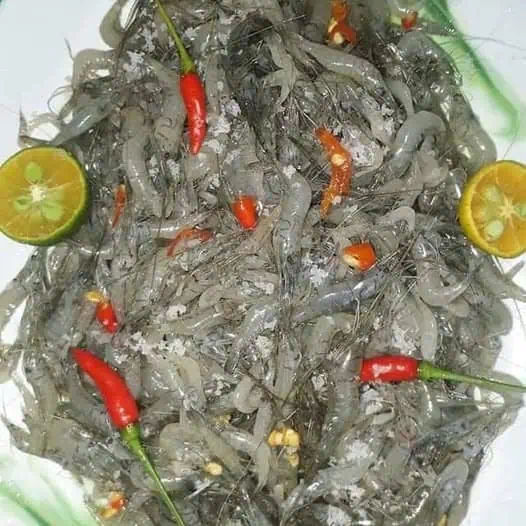









Comments
No Comments